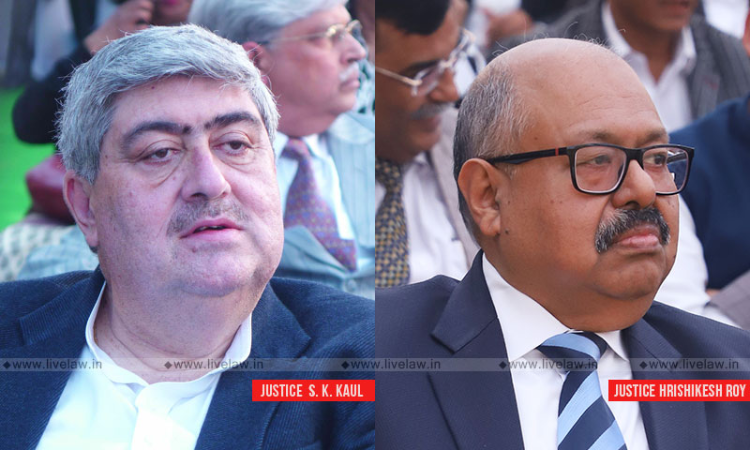- Home
- /
- Top Stories
- /
- When Death Takes Place Inside...
When Death Takes Place Inside Privacy Of House, Onus Is On Residents To Give Explanation: Supreme Court
LIVELAW NEWS NETWORK
20 Nov 2020 10:46 AM IST
The Supreme Court has upheld the conviction of a husband for the murder of his wife after noting that he had not offered an explanation for the death which took place within the privacy of the home.The Court said that in such situations of incidnet happening within the privacy of the house, the accused is "under an obligation to give a plausible explanation regarding the cause of the death in...
The Supreme Court has upheld the conviction of a husband for the murder of his wife after noting that he had not offered an explanation for the death which took place within the privacy of the home.
The Court said that in such situations of incidnet happening within the privacy of the house, the accused is "under an obligation to give a plausible explanation regarding the cause of the death in the statement recorded under Section 313 of the Cr.P.C. and mere denial could not be the answer in such a situation".
A division bench of Justices Sanjay Kishan Kaul and Hrishikesh Roy dismissed the appeal Jayantilal Verma vs. State of Madhya Pradesh(now Chattisgarh) and affirmed the judgment of the Madhya Pradesh High Court.
The case related to the death of one Sahodara Bai, who was found dead on a cot in her matrimonial home in 1999. The cause of death was asphyxia due to strangulation and the doctor who conducted post mortem opined that the death was homicidal.
The trial court convicted the husband, father-in-law and the mother-law of Sahodara Bai for her murder. The case was wholly based on circumstantial evidence. The evidence of one Kishore Kumar, the brother of deceased, was heavily relied on by the court to note that there was a history of animosity between the deceased and her husband and in-laws. The court ruled out other causes of death. There was no evidence of theft or house-breaking in the house. The suicide theory was also ruled out as there were scratch marks found on her neck.
The High Court sustained the conviction of the husband but acquitted the mother-in-law. The father-in-law died during the pendency of the appeal.
The High Court went on to state that since the incident had taken place inside the privacy of the house, the onus was on the persons residing in the house, to give an explanation. In such situations, it was noted that it is difficult for the prosecution to lead any direct evidence to establish the guilt of the accused. In this regard, the High Court referred to Section 106 of the Indian Evidence Act, 1872, which states that the burden of proving a fact within the special knowledge of a person is upon him,
The High Court opined that in such cases, while the initial burden to establish the case would be upon the prosecution, it would be of a relatively light character. There would be a corresponding a burden on the inmates of the house to give cogent explanation as to how the crime was committed. They could not get away by keeping quiet and offering no explanation.
The Supreme Court approved the reasoning of the High Court by saying :
"In our view, the most important aspect is where the death was caused and the body found. It was in the precincts of the house of the appellant herein where there were only family members staying. The High Court also found that the location of the house and the surrounding buildings was such that there was no possibility of somebody from outside coming and strangulating the deceased and that too without any commotion being caused or any valuable/jewellery missing".
The SC noted that the the fact that the family members were in the home some time before is also quite obvious.
"No explanation has been given as to how the wife could have received the injuries. This is a strong circumstance indicating that he is responsible for commission of the crime. The appellant herein was under an obligation to give a plausible explanation regarding the cause of the death in the statement recorded under Section 313 of the Cr.P.C. and mere denial could not be the answer in such a situation".
While dismissing the appeal, the apex court observed that to examine whether the appellant has completed 14 years of actual sentence or not and if it is so, his case should be examined within a maximum period of two months for release in accordance with norms.
Click here to read/download the judgment


